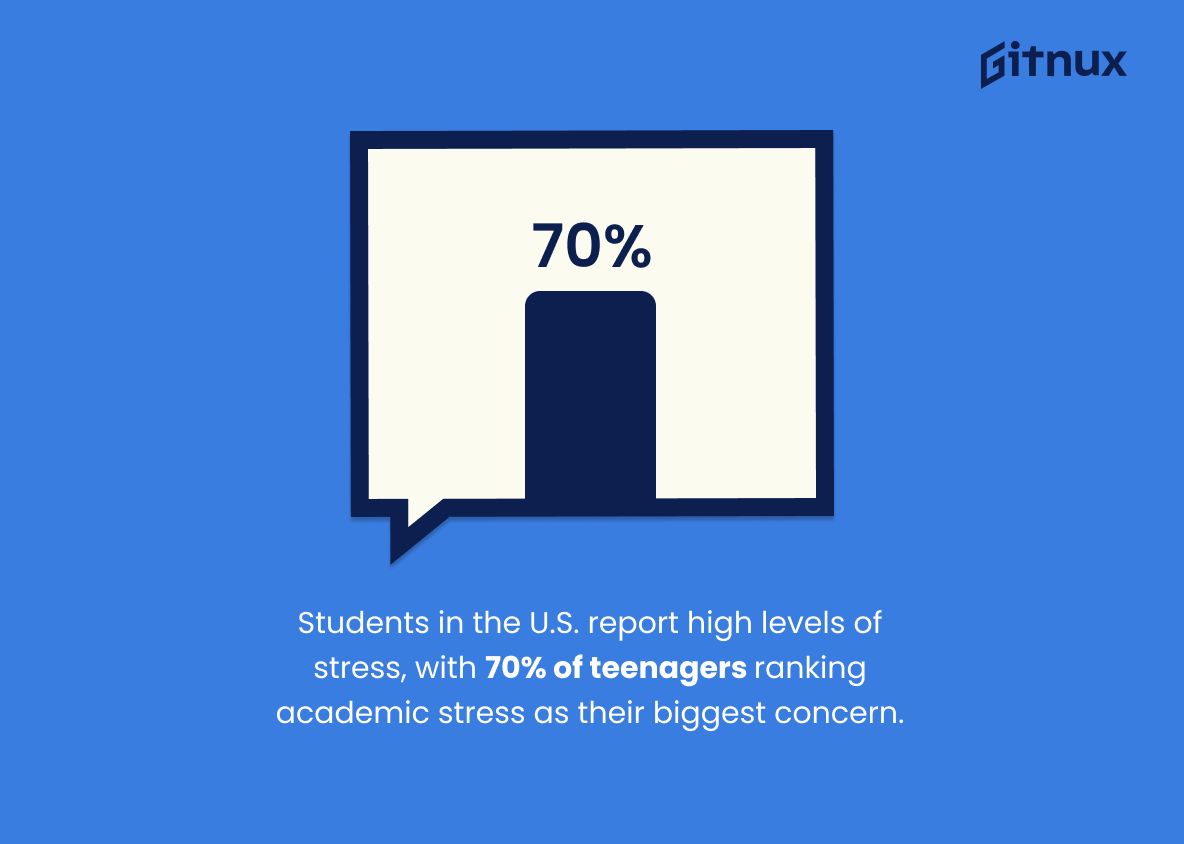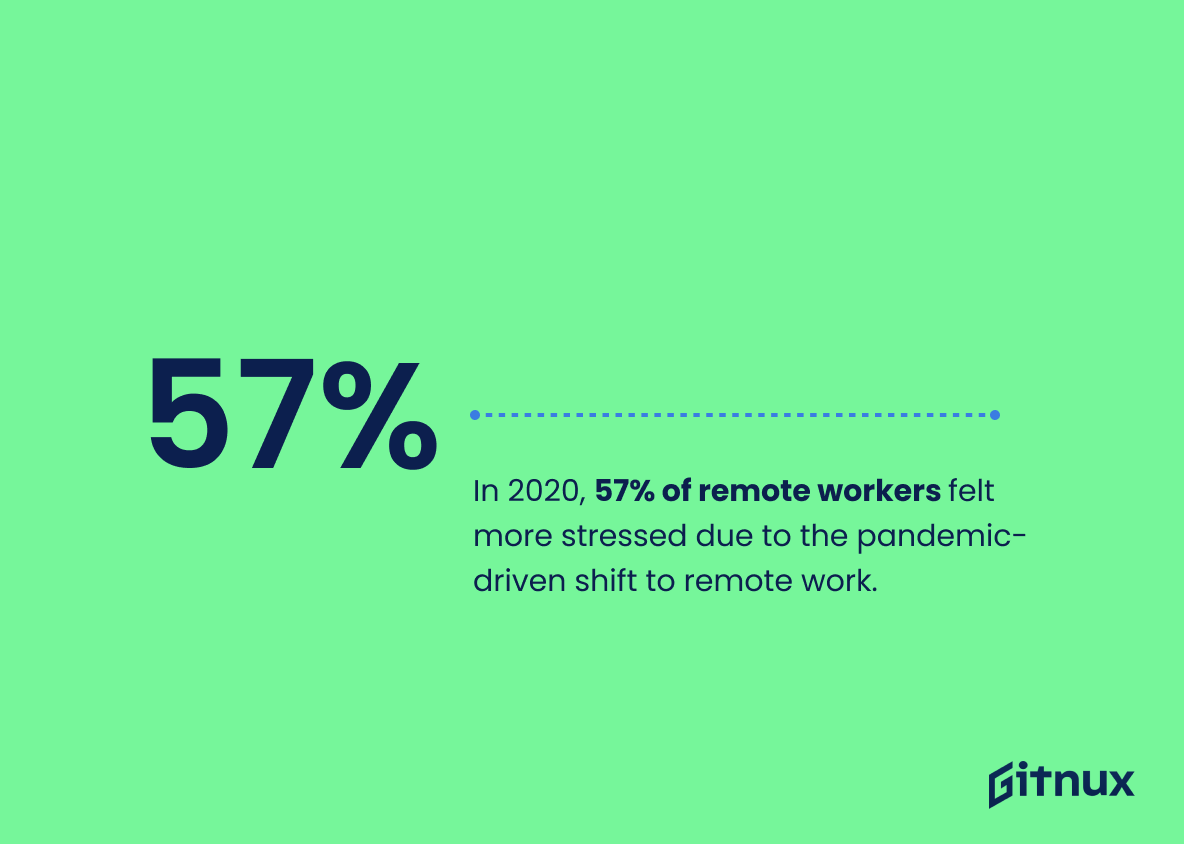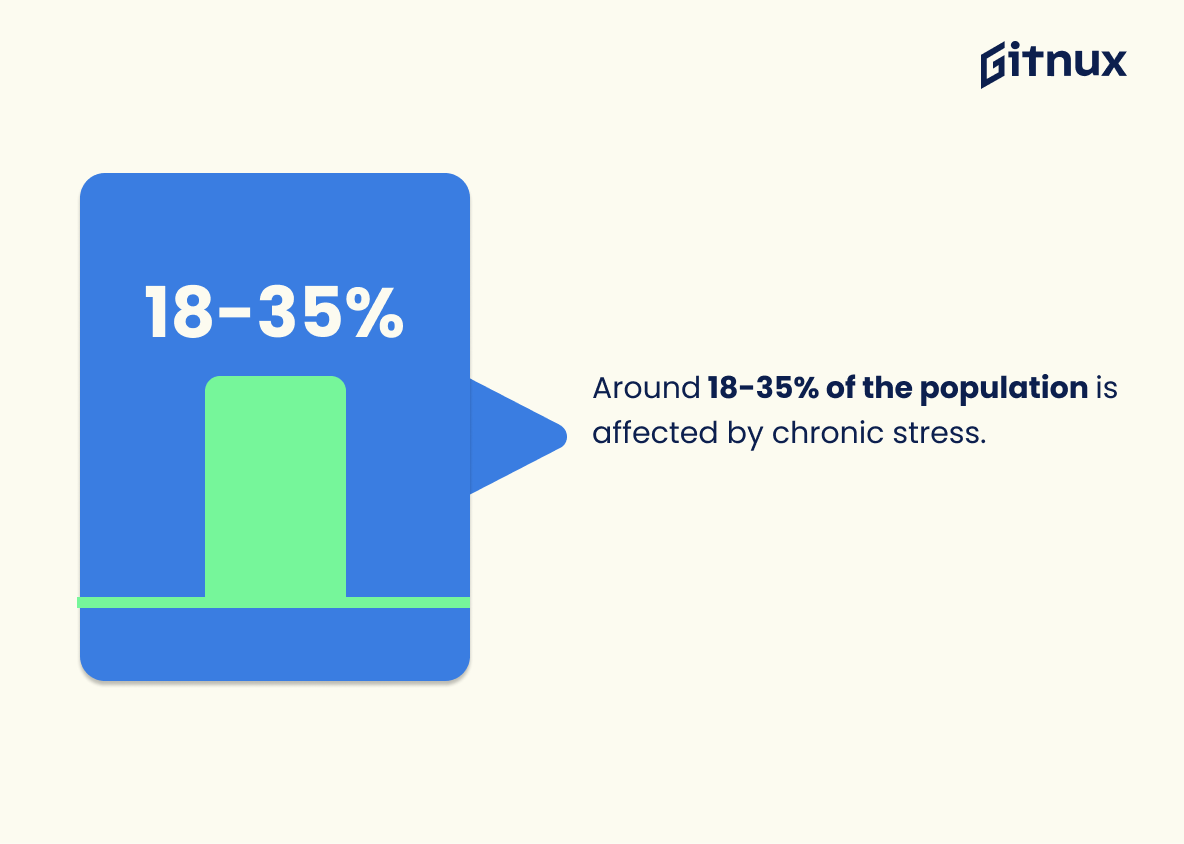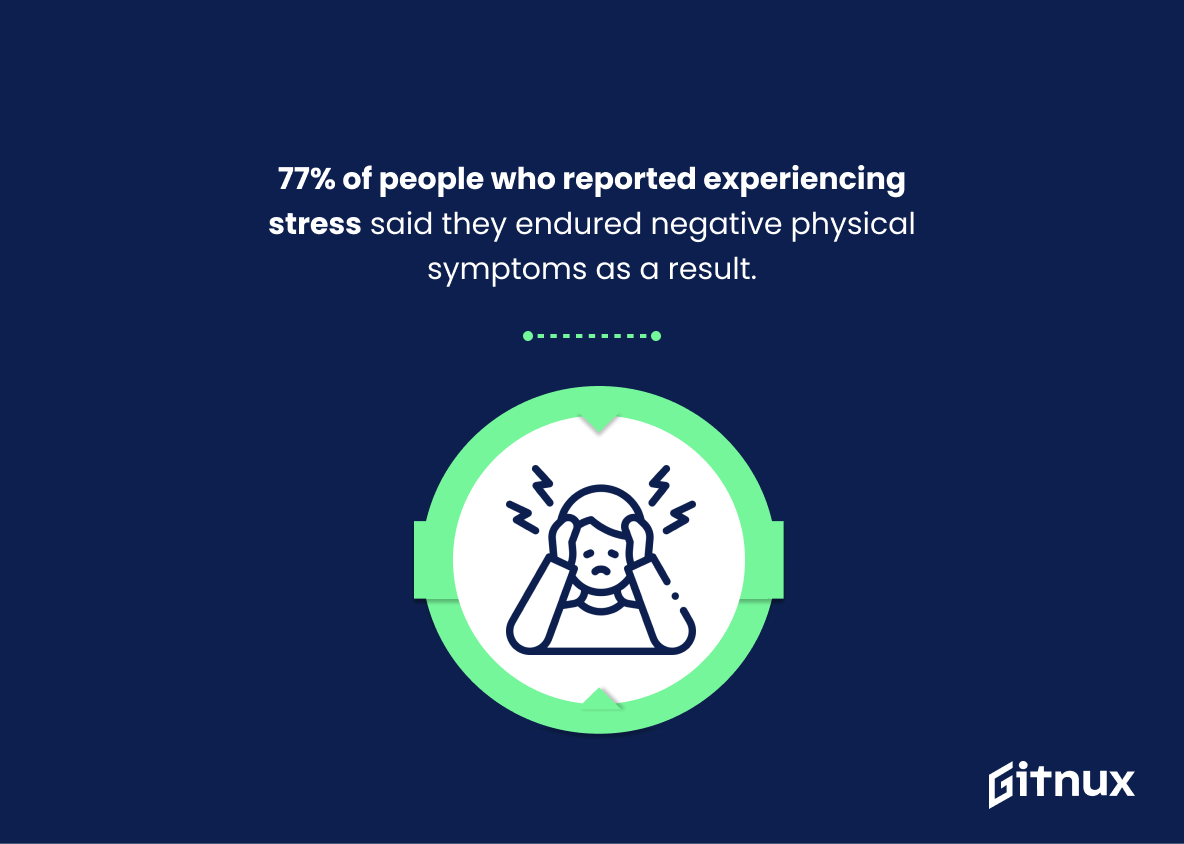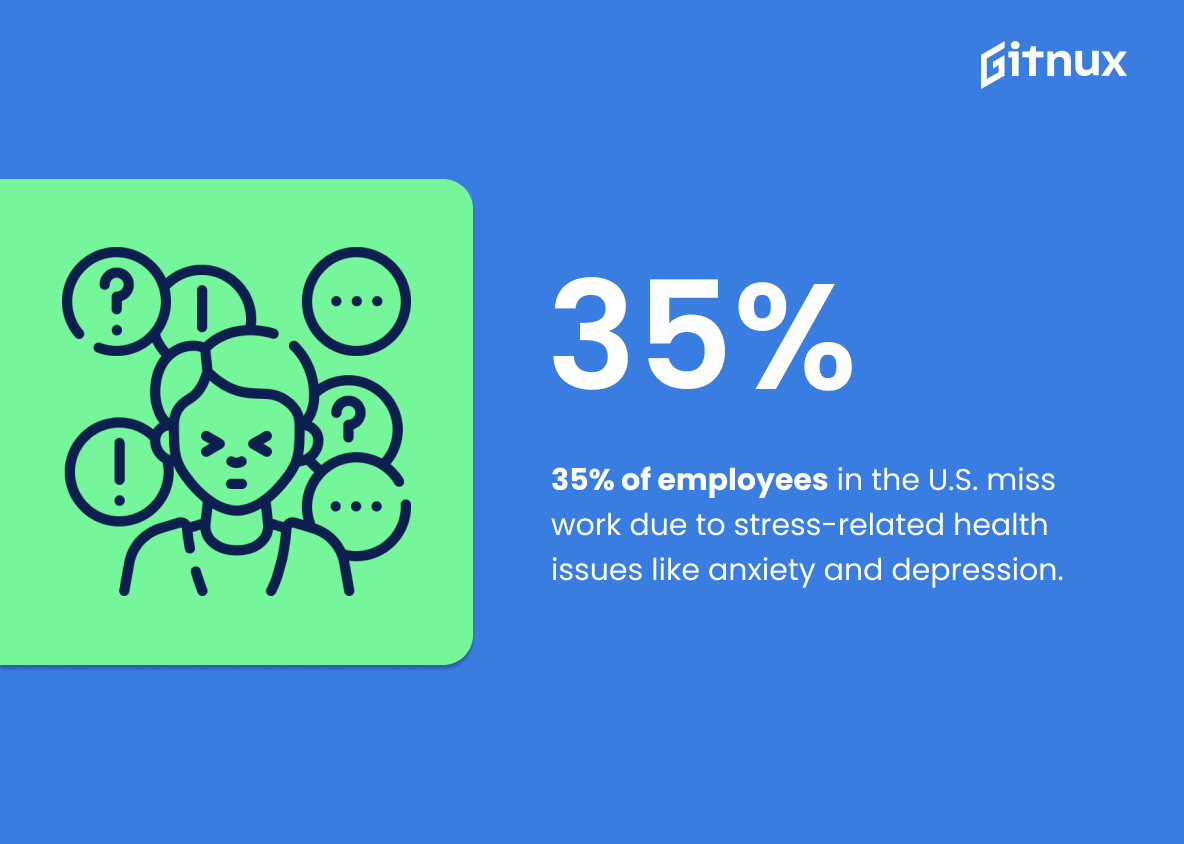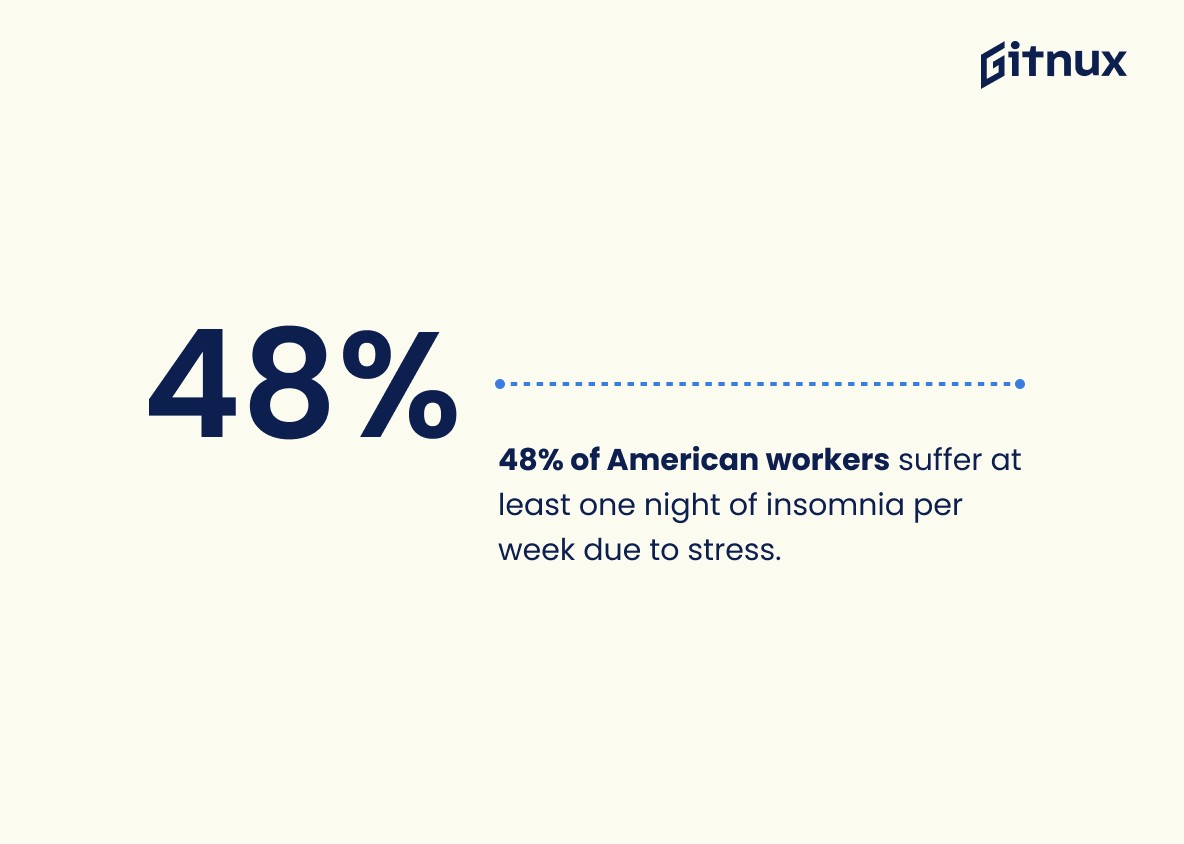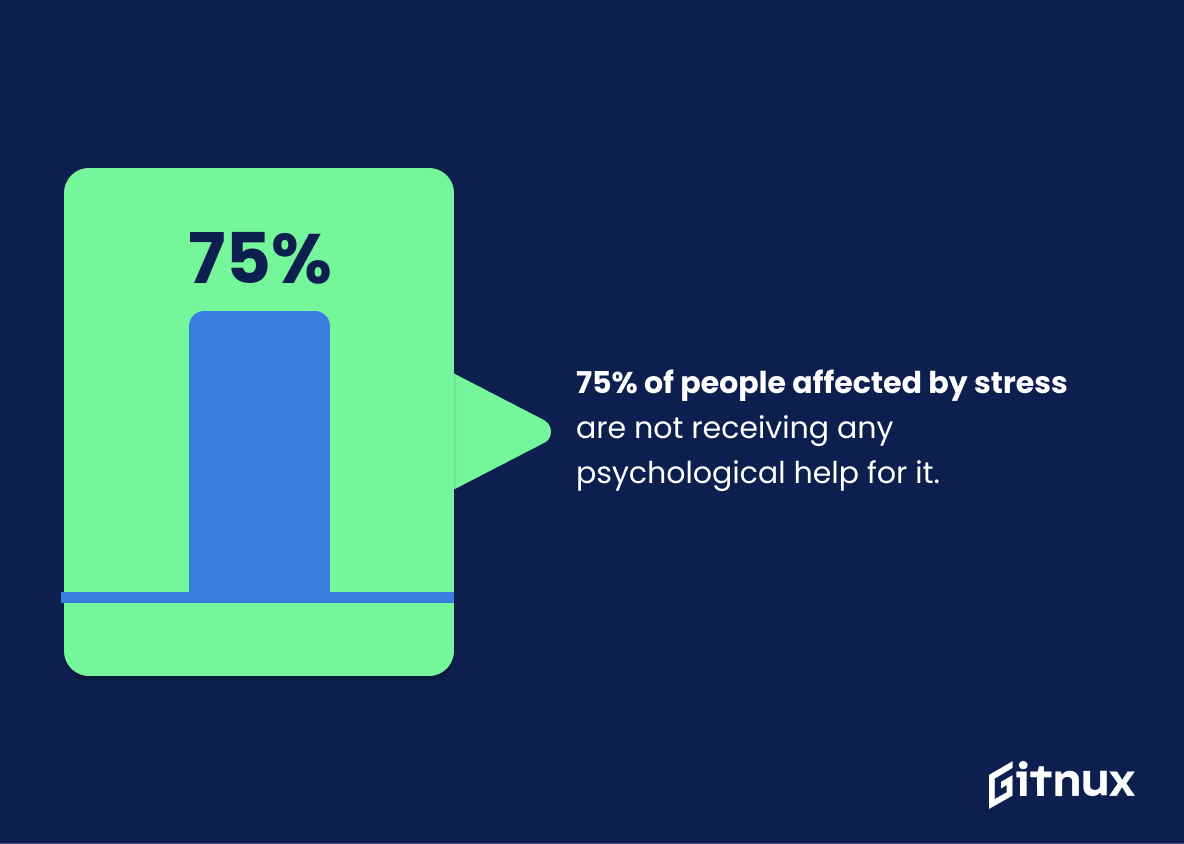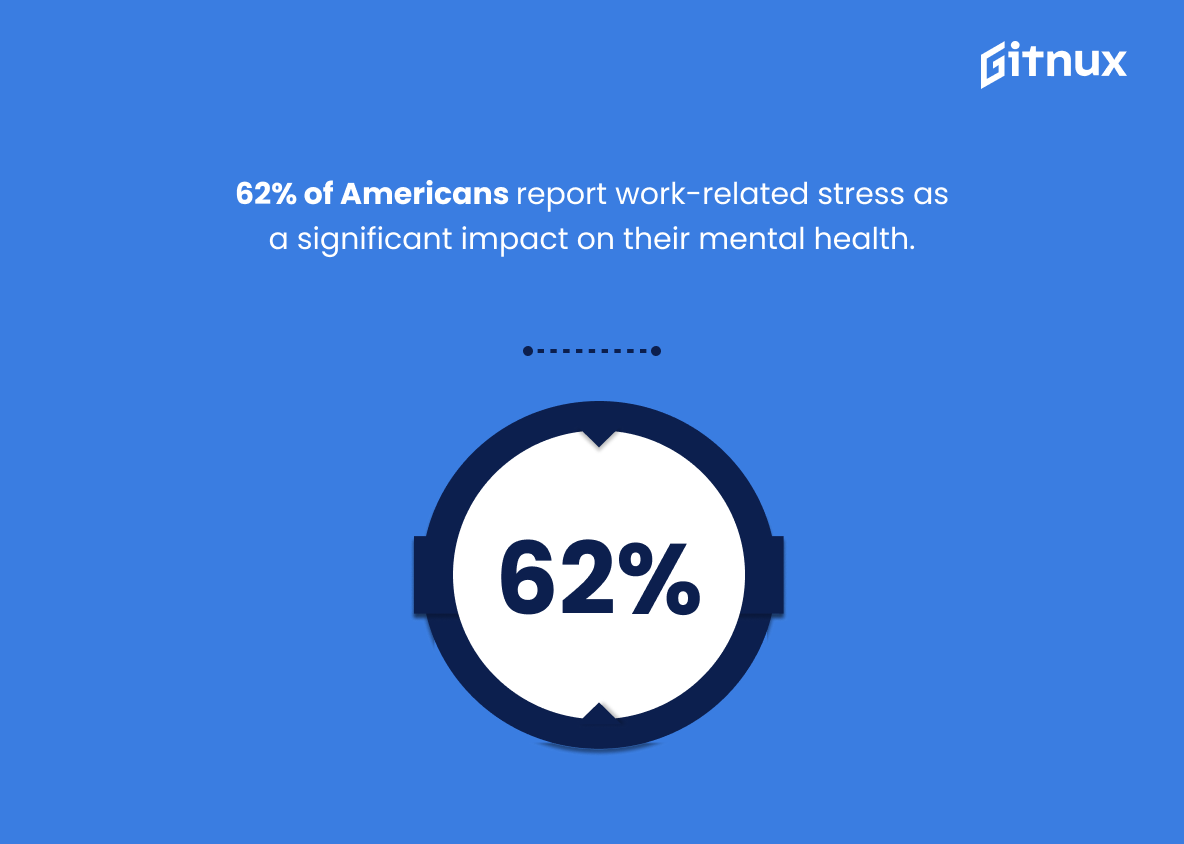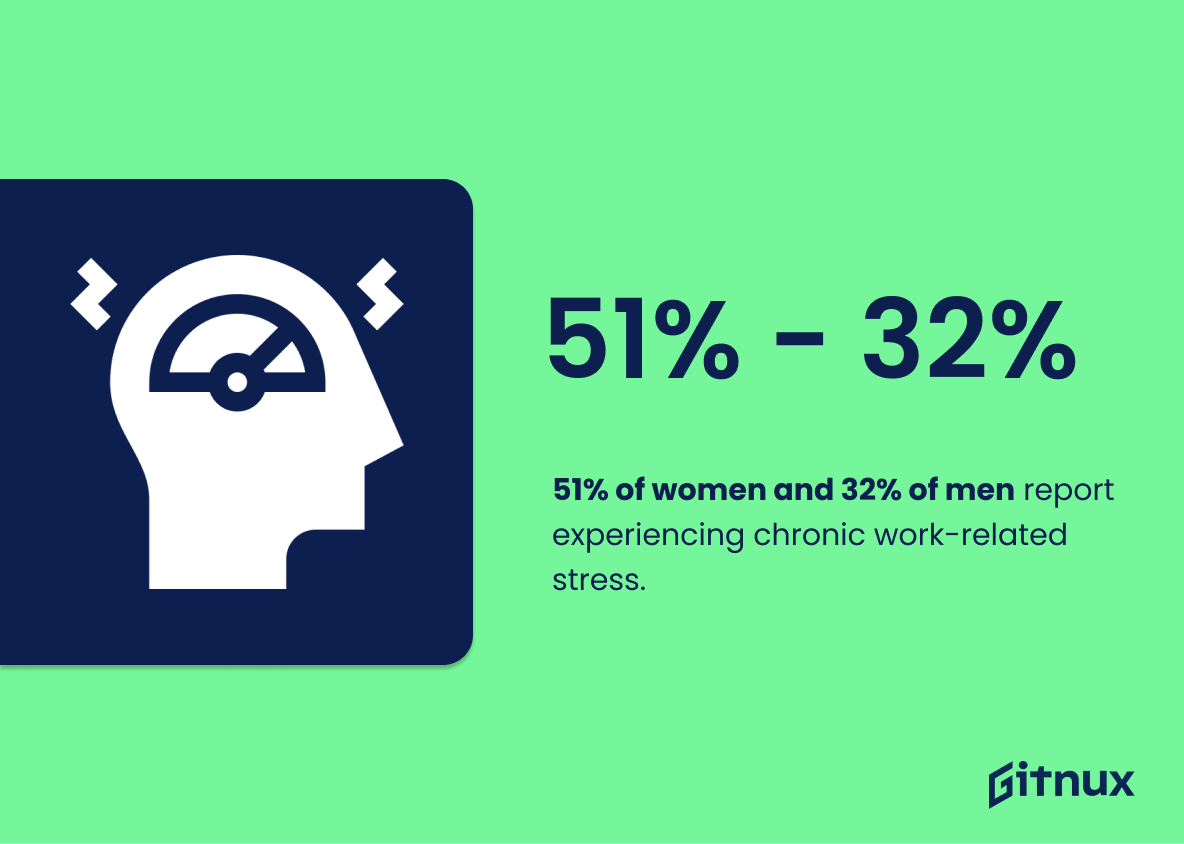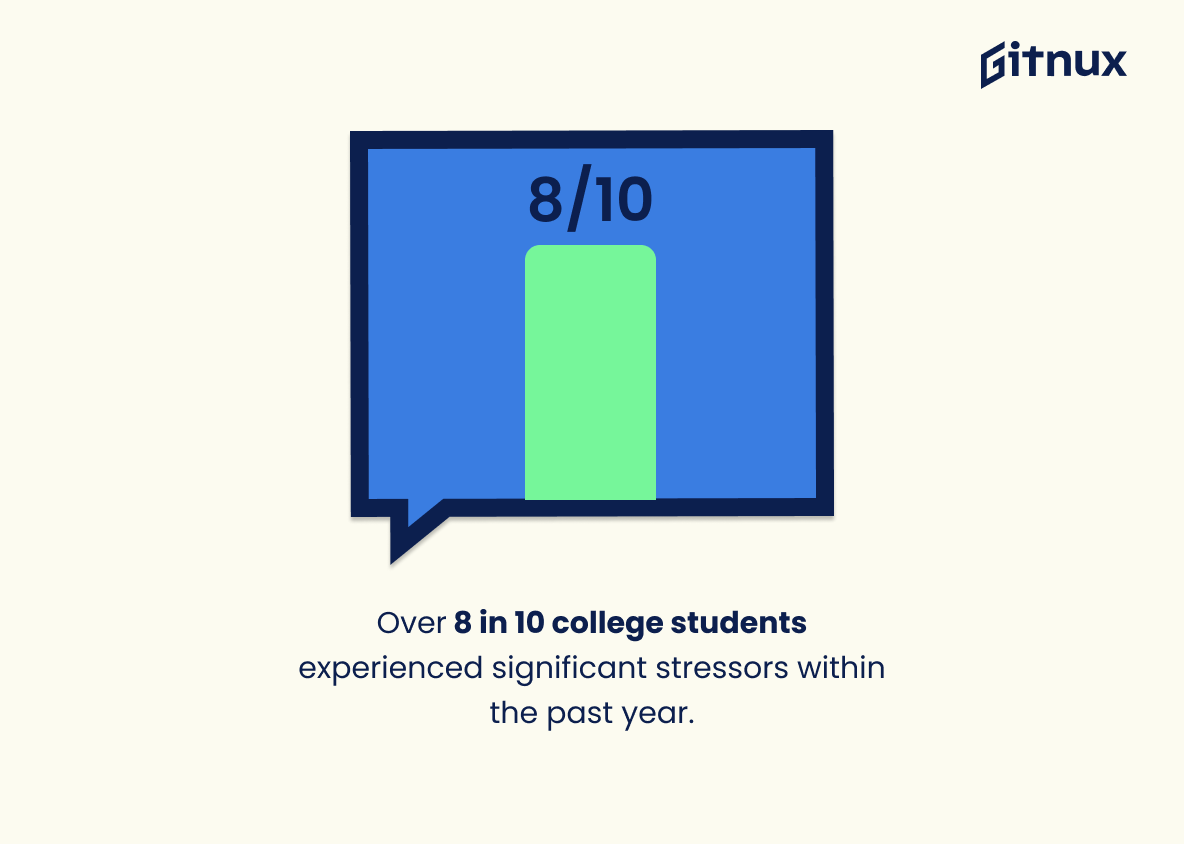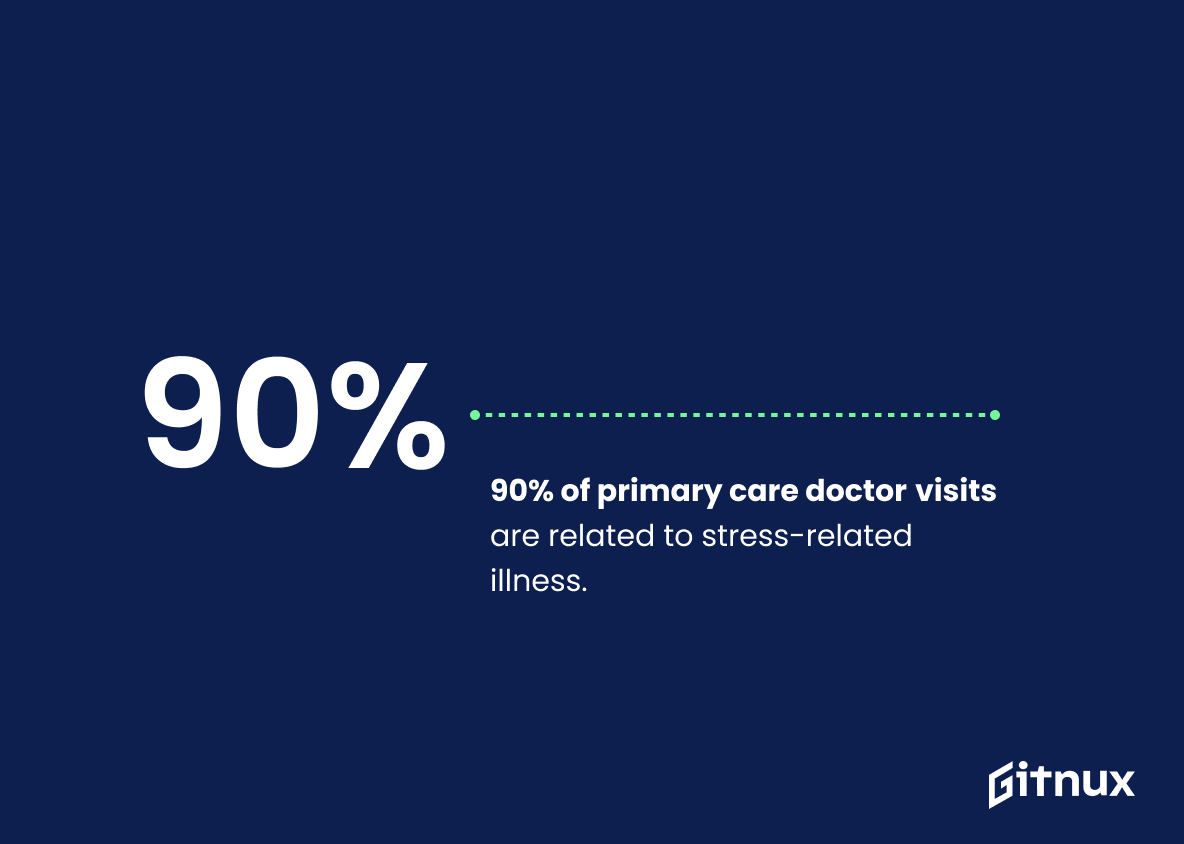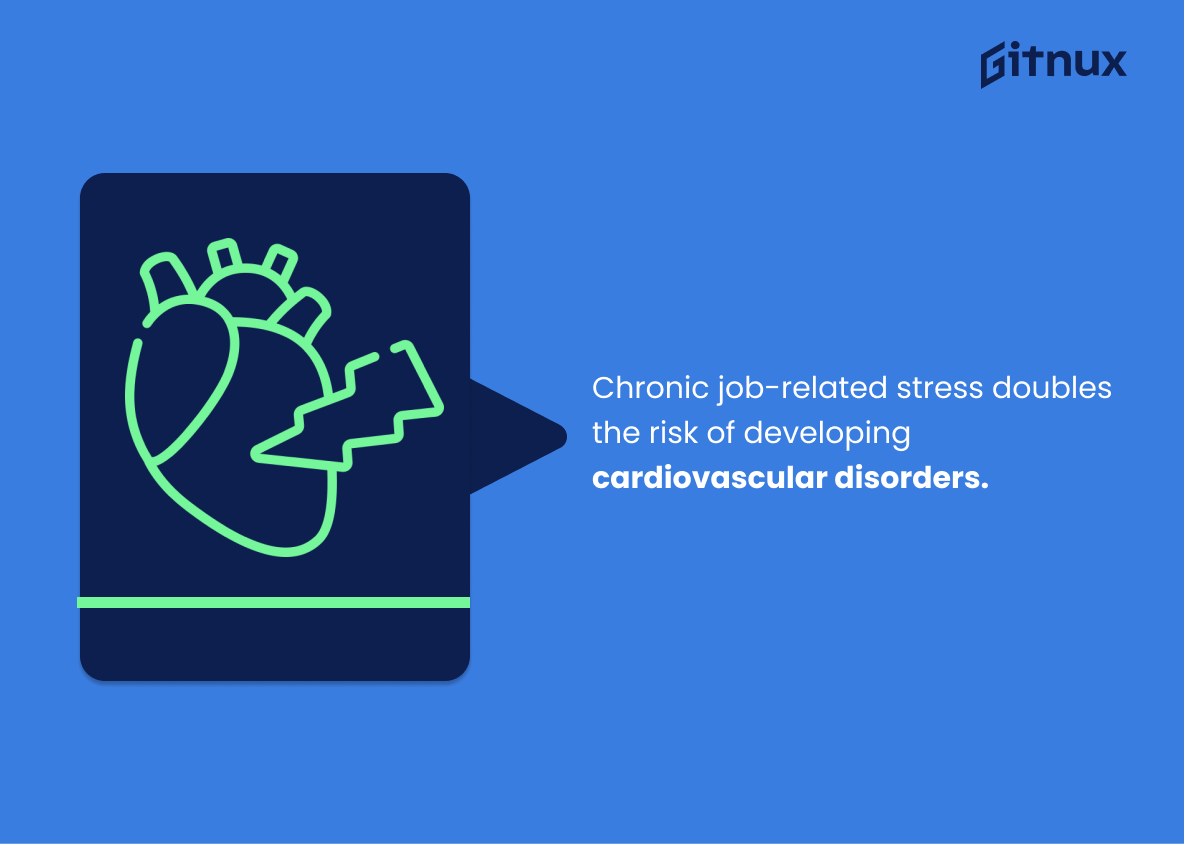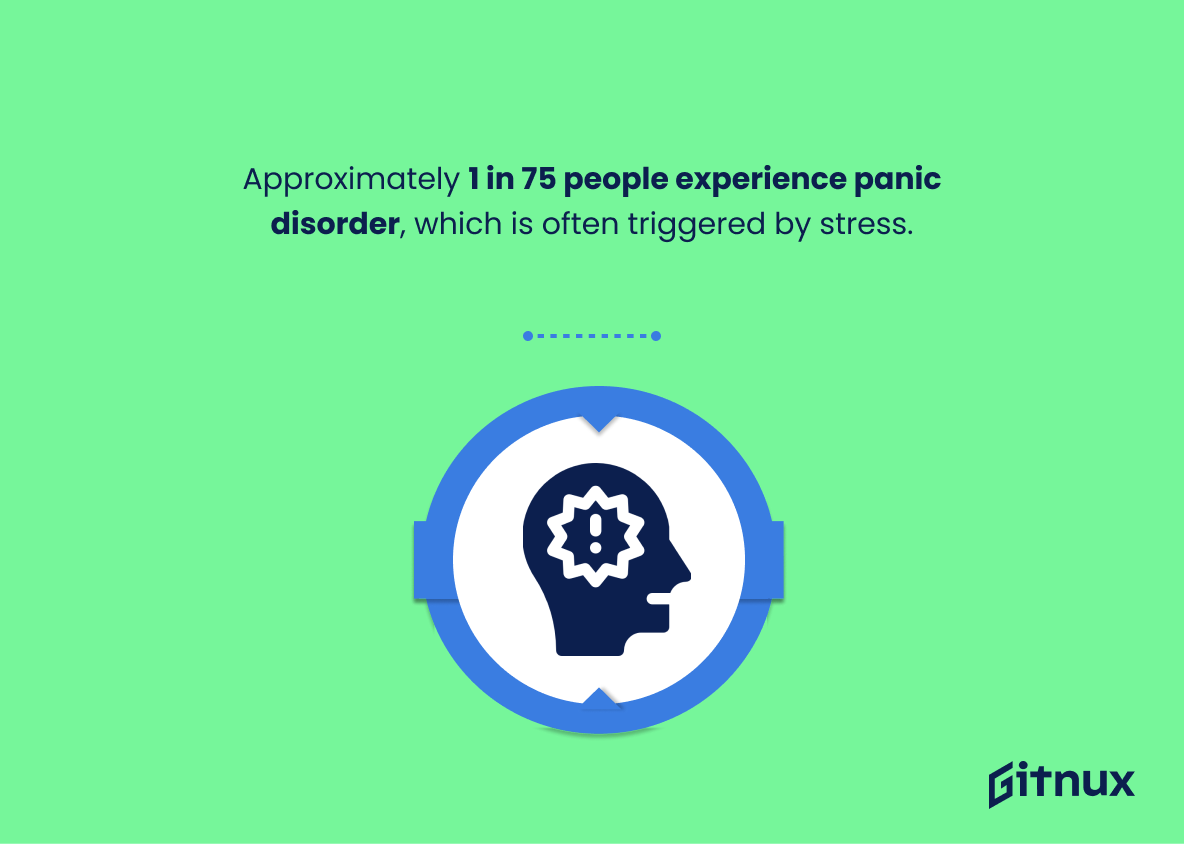Stress, an often unseen but powerful force, profoundly impacts individuals of all demographics. Its rising prevalence recently can be attributed to myriad factors including unprecedented crises like the COVID-19 pandemic, ever-mounting work pressures, and financial uncertainties, among others. Such influences are ubiquitous, underscoring the importance of unpacking the breadth and depth of stress in contemporary society.
In our article, we delve into this complex issue, exploring the most salient and impactful aspects of stress in an attempt to elucidate its scope. To aid in our journey, we present 20 critical statistics about stress that not only reveal its pervasiveness, but also underscore the pressing need to address this pervasive concern.
Stress Statistics Overview
Stress can affect mental health, and 1 in 5 adults in the U.S. lives with a mental illness.
This statistic is a stark reminder of the impact that stress can have on mental health. It highlights the prevalence of mental illness in the U.S., and serves as a reminder that stress can be a major contributing factor to the development of mental health issues. This statistic is an important reminder that stress should not be taken lightly, and that it can have serious consequences if not managed properly.
Students in the U.S. report high levels of stress, with 70% of teenagers ranking academic stress as their biggest concern.
This statistic is a stark reminder of the immense pressure that students in the U.S. are facing. It highlights the fact that academic stress is a major issue for teenagers, and that it is something that needs to be addressed. It serves as a call to action for parents, educators, and policy makers to take steps to reduce the amount of stress that students are experiencing.
In 2020, 57% of remote workers experienced an increased level of stress because of the transition to remote work during the pandemic.
This statistic is a stark reminder of the immense pressure that remote workers have had to face during the pandemic. It highlights the fact that the transition to remote work has been a difficult one for many, with a significant portion of the workforce feeling the strain of increased stress levels. This statistic is an important one to consider when discussing the impact of the pandemic on remote workers and the need for employers to provide adequate support and resources to help them manage their stress levels.
Around 18-35% of the population is affected by chronic stress.
This statistic is a stark reminder of the prevalence of chronic stress in our society. It highlights the fact that a significant portion of the population is struggling with this issue, and that it is a problem that needs to be addressed.
77% of people who reported experiencing stress said they endured negative physical symptoms as a result.
This statistic is a powerful reminder of the physical toll that stress can take on our bodies. It highlights the importance of taking steps to reduce stress levels, as the physical symptoms associated with it can be debilitating. It also serves as a warning to those who may be unaware of the physical effects of stress, and encourages them to take action to manage their stress levels.
35% of employees in the U.S. miss work due to stress-related health issues like anxiety and depression.
This statistic is a stark reminder of the prevalence of stress-related health issues in the workplace. It highlights the need for employers to take proactive steps to address the mental health of their employees and create a supportive environment. It also serves as a warning to employees to be mindful of their stress levels and take steps to manage it before it becomes a serious health issue.
60% of adults in the U.K. experienced stress in 2021, up from 53% in the previous year.
This statistic is a stark reminder of the increasing prevalence of stress in the U.K. It highlights the need for more awareness and understanding of the causes and effects of stress, as well as the importance of taking steps to reduce stress levels. This statistic is a call to action for individuals, organizations, and governments to take steps to reduce stress and improve mental health.
48% of American workers suffer at least one night of insomnia per week due to stress.
This statistic is a stark reminder of the prevalence of stress in the American workforce. It highlights the fact that nearly half of all workers are struggling to get a good night’s sleep due to the pressures of their job. This is a concerning issue that needs to be addressed, as insomnia can have a serious impact on physical and mental health.
75% of people affected by stress are not receiving any psychological help for it.
This statistic is a stark reminder of the prevalence of stress in our society and the lack of resources available to those affected by it. It highlights the need for more mental health support and resources to be made available to those who are struggling with stress. It also serves as a call to action for individuals to take steps to reduce their stress levels and seek help if needed.
62% of Americans report work-related stress as a significant impact on their mental health.
This statistic is a stark reminder of the prevalence of work-related stress in the lives of Americans. It highlights the fact that stress is a major factor in the mental health of many individuals, and that it should not be taken lightly. This statistic is a call to action for employers to take steps to reduce stress in the workplace and for individuals to take steps to manage their stress levels.
51% of women and 32% of men report experiencing chronic work-related stress.
This statistic is a stark reminder of the fact that stress is a pervasive issue in the workplace, and that it affects both genders in different ways. It highlights the need for employers to take proactive steps to reduce stress levels among their employees, and to ensure that both men and women are given the support they need to manage their stress.
Over 8 in 10 college students experienced significant stressors within the past year.
This statistic is a stark reminder of the prevalence of stress among college students. It highlights the fact that stress is a common issue that affects the majority of college students, and should not be taken lightly. It is a call to action for universities, parents, and students to take steps to reduce the amount of stress that college students experience.
90% of primary care doctor visits are related to stress-related illness.
This statistic is a powerful reminder of the prevalence of stress-related illness in our society. It highlights the need for greater awareness and understanding of the impact of stress on our physical and mental health. It also serves as a call to action for individuals to take steps to reduce their stress levels and for healthcare providers to be more proactive in addressing stress-related illness.
Chronic job-related stress doubles the risk of developing cardiovascular disorders.
This statistic is a stark reminder of the potentially devastating effects of chronic job-related stress on our health. It highlights the importance of taking steps to reduce stress in the workplace, as it can have serious consequences for our cardiovascular health.
Approximately 1 in 75 people experience panic disorder, which is often triggered by stress.
This statistic is a powerful reminder of the prevalence of panic disorder, a condition that can be triggered by stress. It serves as a reminder that stress can have serious consequences, and that it is important to take steps to manage it. It also highlights the need for more research into the causes and treatments of panic disorder, so that those affected can get the help they need.
Conclusion
The statistics presented in this blog post demonstrate the prevalence of stress and its effects on individuals, families, communities, and society as a whole. Stress can manifest itself physically or mentally and is often caused by external factors such as work-related issues or pandemics like COVID-19. It can also be triggered internally due to anxiety disorders like panic disorder.
The data shows that many people are affected by stress in some way – whether it’s through physical symptoms such as fatigue or headaches; mental health conditions including depression; financial worries; academic pressures for students; job insecurity during remote working periods; or an increased risk of cardiovascular diseases. Therefore, it is important to recognize the signs of stress early on so that appropriate measures can be taken to reduce its impact on our lives.
References
0. – https://www.apa.org
1. – https://www.flexjobs.com
2. – https://www.news.gallup.com
3. – https://www.businessnewsdaily.com
4. – https://www.cnbc.com
5. – https://www.acha.org
6. – https://www.forbes.com
7. – https://www.nimh.nih.gov
8. – https://www.nytimes.com
9. – https://www.mentalhealth.org.uk
10. – https://www.ncbi.nlm.nih.gov
11. – https://www.shrm.org
12. – https://www.health.com

